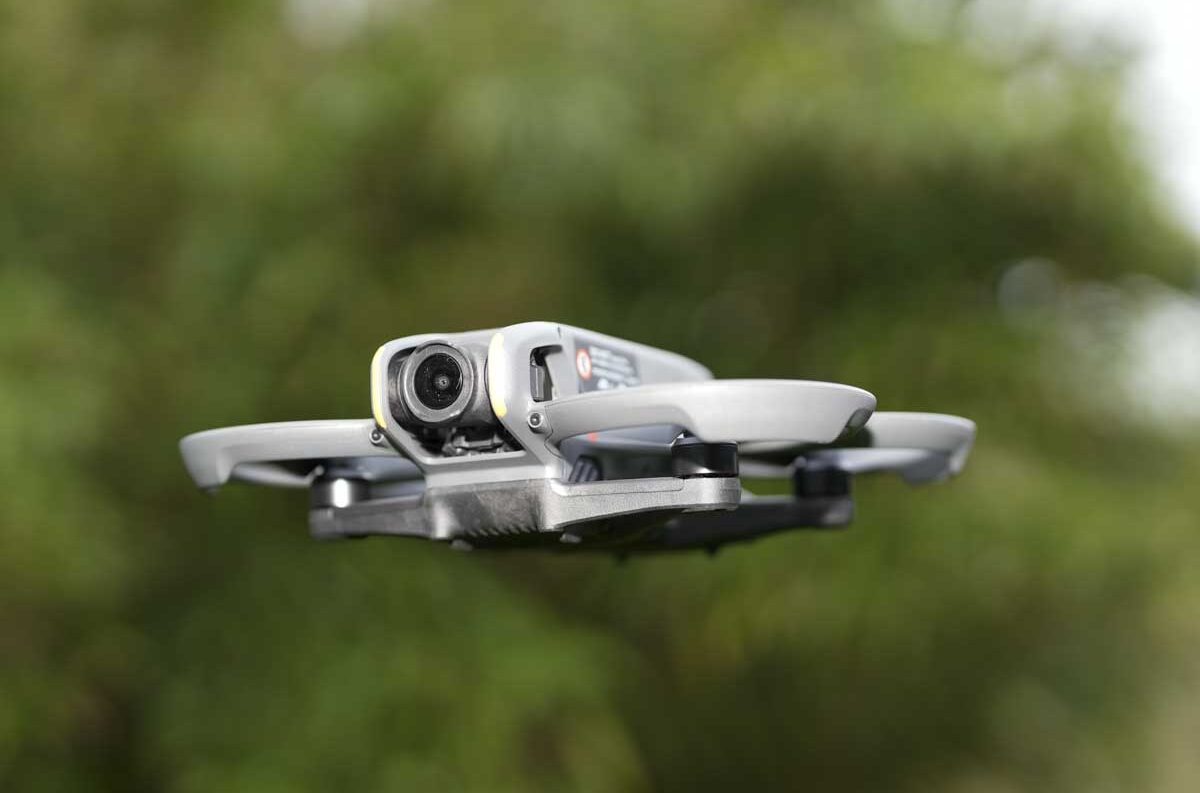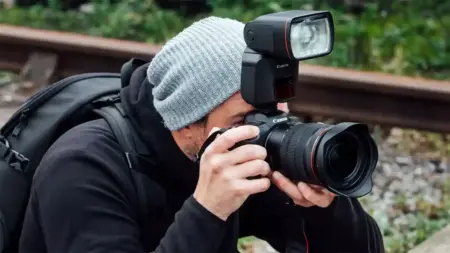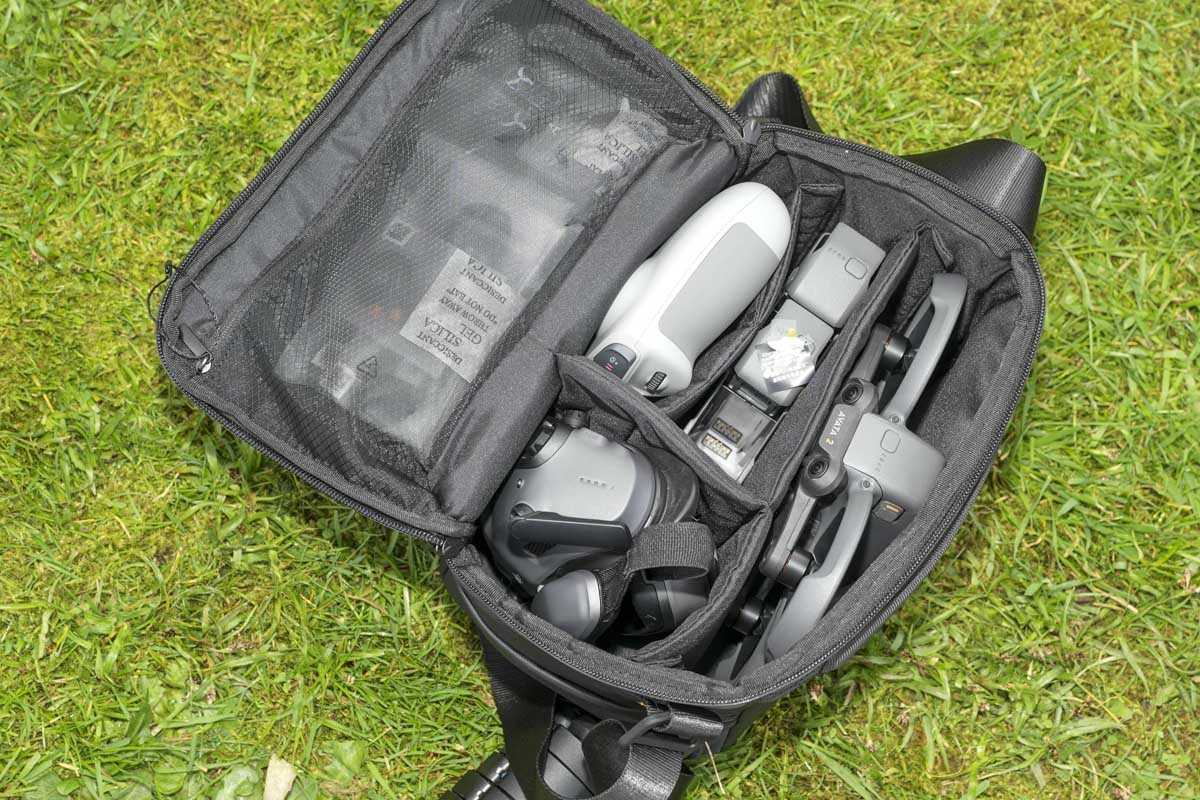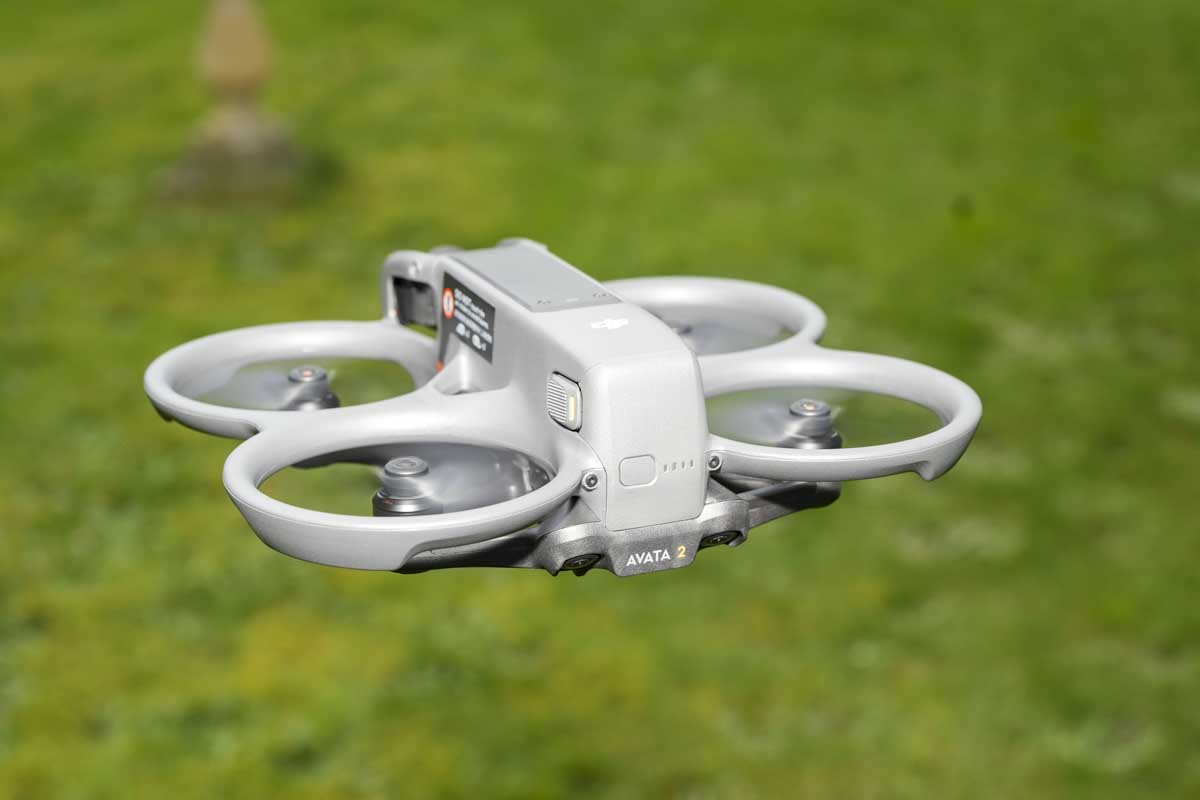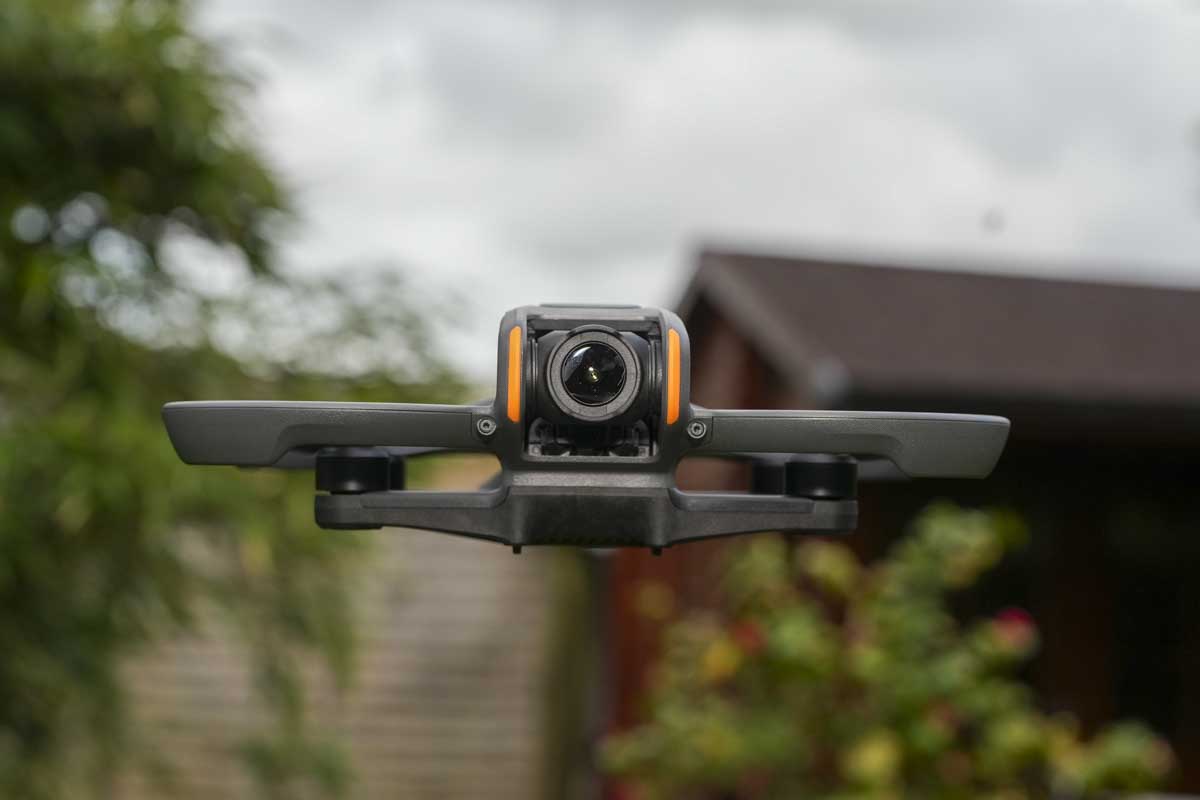The beauty of DJI drones lies in their ease of use and safety, and the Avata 2, despite being a fun, thrill-seeking FPV drone, is probably the easiest, safest, and most fun drone they have yet produced. In real terms, this is a true entry-level drone, but one that can adapt and enhance its performance and features to suit the pilot.
Before delving into the acrobatic features, the standard flight is simple enough with the Motion controller: double press the trigger to start the rotors and long press to take off. The design of the controller has changed somewhat since the Motion 2, so if you’re familiar with the old version, take some time to check over the new button positions.
In flight, the mode is set to N or normal, with the Goggle display showing exactly what’s happening and where you are. In fact, there’s a complete readout of all the flight characteristics and data, including speed and altitude, if you need to know.

The Motion controller works like a joystick and enables relatively free and easy movement, but it does take a while to truly master all the moves and types of flight that are possible. Staying in Normal flight mode while you get the hang of the control is highly advisable, and 6m/s through the Goggles 3 is actually far faster than you might imagine.
One point to note is that with a quick double tap on the side of the Goggles, the view switches to what’s in front of you rather than the drone. This is very handy and means that you don’t have to remove the goggles if you just want to check something. The view through the goggles is a little narrow but far better than nothing at all.
Back to the flight, and in normal mode, you can start to experiment with the flight and how the drone handles in the air. Compared with standard drones, such as the DJI Mini 3 Pro, the control feels just as solid, but at all times you have the reassurance that the drone is safe from crashes due to those strong propeller guards. Moreover, there are object detection sensors, which, like those in other drones, prevent the Avata 2 from crashing into most objects, including the ground. As you get more familiar with the drone and its functions, these avoidance sensors start to play a more significant role and, in fact, make it relatively difficult to crash the drone as easily as one might initially think.

Switching up to sport mode, you start to get some speed into the mix, and the small drone really comes alive. In this mode, you still have most of the flight protections, so again, it’s a great place to learn and really start to get a handle on some fast-paced flying. One of the interesting features is the turtle mode, which was available on the original Avata and allows the drone to flip itself back the right way when you crash it. Essentially, if it lands on its back, it flips itself over; it’s very clever.
Stepping into the more advanced manual mode, everything is taken up a notch. Currently, the speed is limited to 19m/s in the EU due to the C1 drone class. However, as the UK doesn’t adhere to that structure or classification at present, there’s no real reason that it should be limited in the UK, so maybe an update after the launch is possible.
In manual mode, you have access to the full features of the drone, and you will need space to flip and roll the drone using different button presses and gestures.
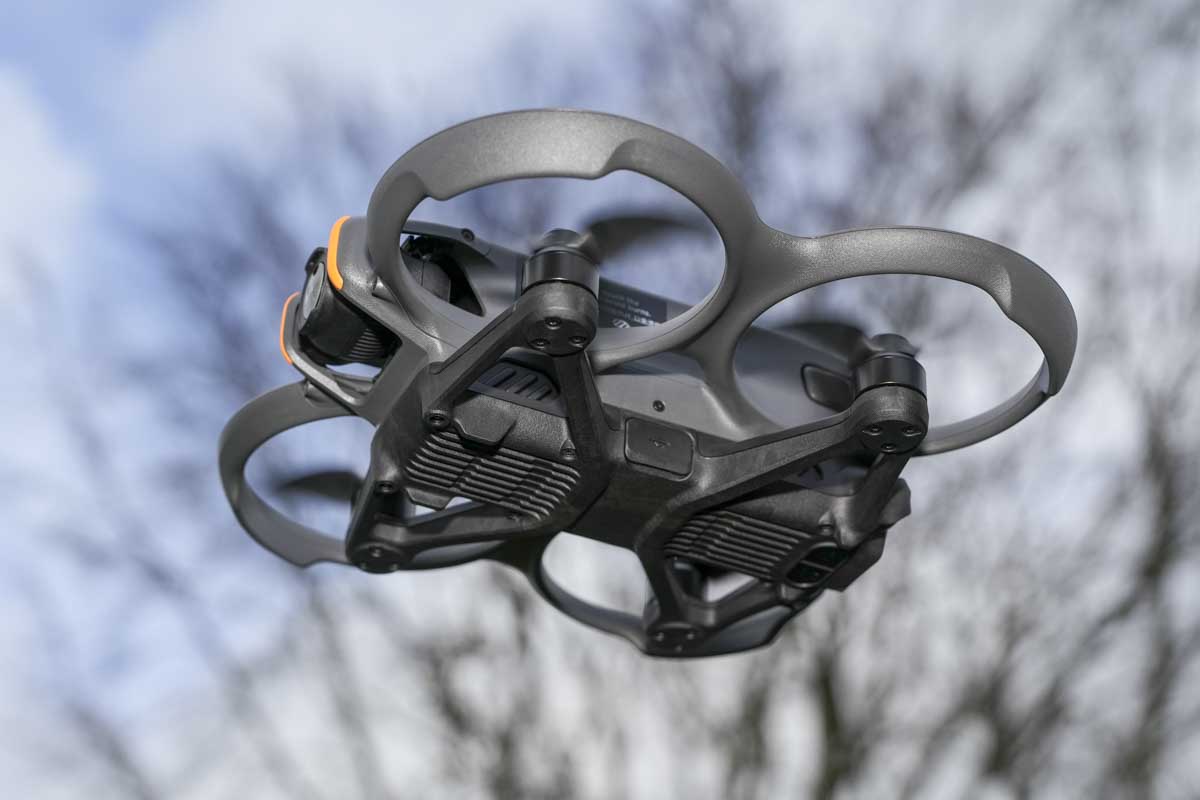
At the end of the test, the real feature of this drone is the fun of flying rather than capturing any images or video. However, the camera is very good, and footage from the camera will follow shortly. A few notes on the camera: it’s mounted on a single-axis gimbal, unlike the more standard 3-axis seen on DJI’s other drones. Like the DJI Osmo Action 4, it uses RockSteady 3 to digitally stabilize footage. Like the action camera, the effect of RockSteady and its partner HorizonSteady is outstanding. You also have the ability to move the camera up or down, although not progressively as you can with the DJI Mini 3 Pro, rather it’s just vertically up or down, still, it’s some adjustment.
When it comes to performance, the DJI Avata 2 is very much about the fun of flying rather than the imaging. But more than that, this is a great training drone, as it has none of the frailty of the imaging drones, so for anyone just starting out, it’s an ideal option. Moreover, if you start with the Avata 2 combo with the Goggles 3 and Motion 3, these can also be paired with DJI’s other drones. It also means that for many who have an imaging drone, it provides another drone option for practice and fun, and enables you to get shots that would be tricky with other drones. One

